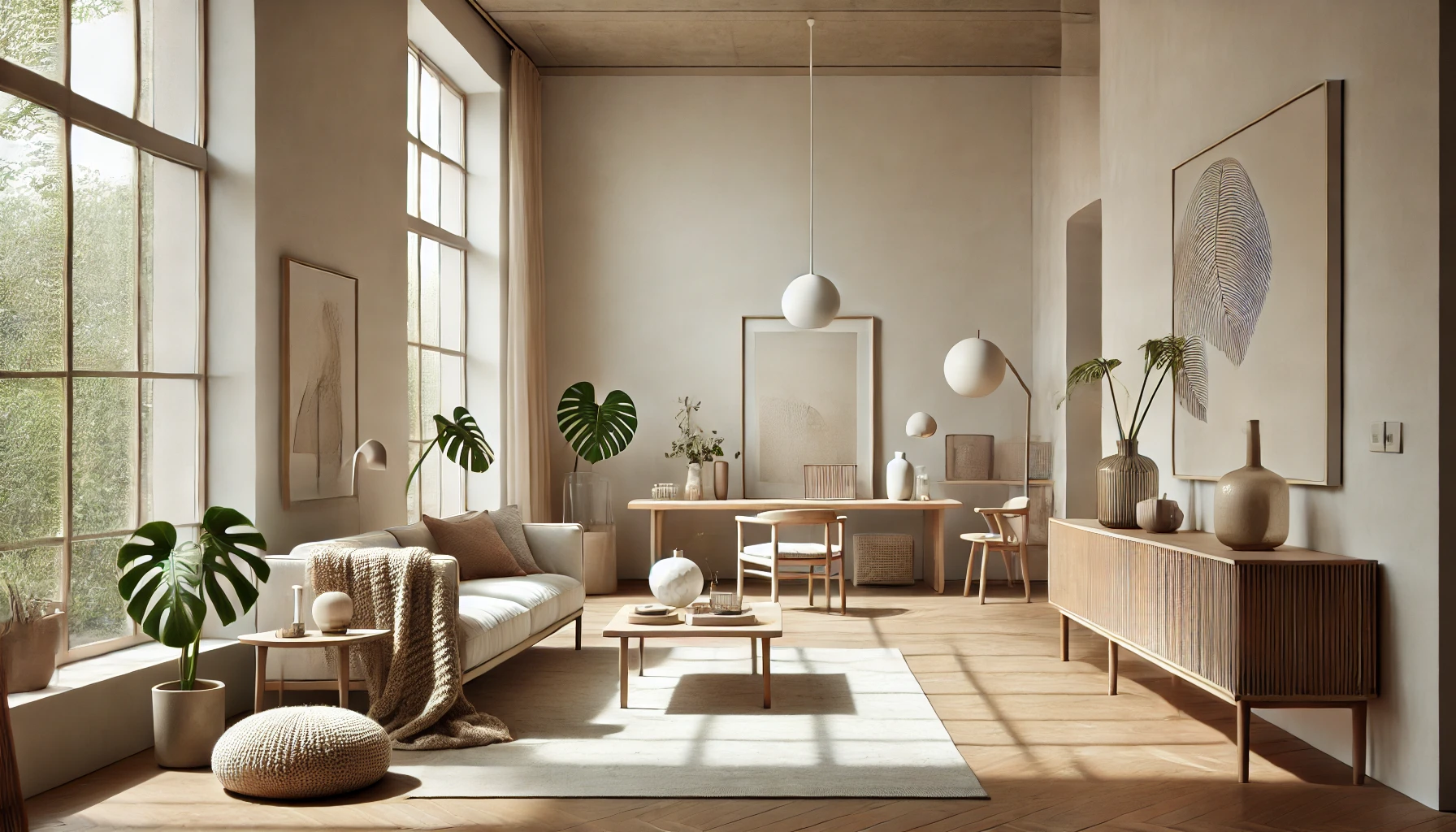Minimalism is more than just a design trend—it’s a lifestyle that emphasizes simplicity, functionality, and intentional living. In an era of constant distractions and overwhelming clutter, a minimalist home provides a serene sanctuary that reflects clarity and purpose. Whether you’re looking to start small or embrace a full-scale makeover, this guide will help you create a minimalist haven tailored to your needs.
 Understanding Minimalism: It’s More Than White Walls
Understanding Minimalism: It’s More Than White Walls
Minimalism isn’t about stripping your home of personality or reducing it to an empty shell. Instead, it’s about curating your space with items that bring you joy, serve a purpose, or enhance your life. The minimalist philosophy encourages thoughtful consumption and mindful design, resulting in a space that feels light, open, and organized.
Start by asking yourself:
- What items truly add value to my life?
- Does this piece of furniture or decor align with my aesthetic vision?
- Can I part with things that no longer serve me?
These questions form the foundation of a minimalist makeover.
Decluttering: The First Step to Minimalism
Before diving into design changes, it’s essential to declutter. Clearing your space allows you to see its true potential.
Begin with one area at a time—your bedroom closet, kitchen counters, or living room shelves. Donate, sell, or recycle items you no longer need. As you sort, remember that minimalism is not about deprivation; it’s about freeing your space for things that truly matter.
Once you’ve decluttered, consider storage solutions to keep your essentials organized. Built-in cabinets, multi-functional furniture, and hidden storage can help maintain a clean and cohesive look.
Creating a Minimalist Aesthetic
Minimalism thrives on simplicity, but simplicity doesn’t mean dull. Thoughtful design choices can make a minimalist space feel warm, inviting, and full of character.
Color Palette
Opt for a neutral color palette with shades of white, beige, gray, and earthy tones. These hues create a calming atmosphere and serve as a canvas for subtle accents. Add pops of color sparingly through throw pillows, artwork, or greenery.
Furniture Selection
Choose furniture with clean lines and functional designs. Avoid ornate details or bulky shapes. Mid-century modern pieces, Scandinavian styles, and modular furniture often align well with minimalist principles.
Lighting Matters
Lighting plays a crucial role in minimalist design. Maximize natural light by keeping windows unobstructed or using sheer curtains. For artificial lighting, select fixtures with sleek, understated designs. Pendant lights, recessed lighting, and LED strips can enhance the ambiance.
The Role of Texture and Materials
A minimalist home doesn’t have to feel cold or sterile. Incorporating natural textures and materials adds warmth and depth to your space.
- Wood: Hardwood floors, bamboo furniture, or walnut accents bring a sense of coziness.
- Stone: Marble, concrete, or terrazzo can add sophistication to minimalist kitchens and bathrooms.
- Textiles: Linen throws, cotton rugs, or wool cushions introduce comfort without overpowering the room.
The key is to balance textures subtly while sticking to a cohesive color scheme.
Personal Touches in a Minimalist Space
Contrary to popular belief, minimalism doesn’t exclude personal expression. Display a few carefully chosen items that resonate with you—a piece of artwork, a family heirloom, or a collection of travel mementos. The goal is to avoid clutter while allowing your personality to shine.
Incorporating plants is another way to bring life to a minimalist home. A single monstera in the corner, a row of succulents on a windowsill, or a cascading pothos on a shelf can add vibrancy without overwhelming the design.
Minimalism as a Lifestyle
Transitioning to a minimalist home isn’t just about aesthetics; it’s a shift in how you live. Adopting minimalist principles can lead to reduced stress, better focus, and a greater appreciation for the things you own.
As you embark on your minimalist makeover, remember that this journey is deeply personal. There’s no one-size-fits-all approach. Whether you’re embracing minimalism for its visual appeal, practical benefits, or philosophical underpinnings, your home should reflect your unique interpretation of this timeless style.
By thoughtfully curating your space and embracing simplicity, you can create a home that feels spacious, serene, and genuinely yours.
 Understanding Minimalism: It’s More Than White Walls
Understanding Minimalism: It’s More Than White Walls



